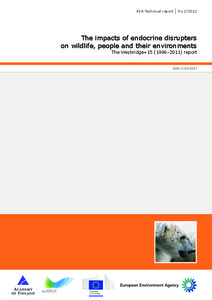The impacts of endocrine disrupters on wildlife, people and their environments: the Weybridge+15 (1996–2011) report
"Rates of endocrine diseases and disorders, such as some reproductive and developmental harm in human populations, have changed in line with the growth of the chemical industry, leading to concerns that these factors may be linked. For example, the current status of semen quality in the few Eur...
| Institution: | ETUI-European Trade Union Institute |
|---|---|
| Format: | TEXT |
| Language: | English |
| Published: |
Luxembourg
2012
Publications Office of the European Union |
| Subjects: | |
| Online Access: | https://www.labourline.org/KENTIKA-19121675124919498579-The-impacts-of-endocrine-disru.htm |
| Summary: | "Rates of endocrine diseases and disorders, such as some reproductive and developmental harm in human populations, have changed in line with the growth of the chemical industry, leading to concerns that these factors may be linked. For example, the current status of semen quality in the few European countries where studies have been systematically conducted, is very poor: fertility in approximately 40 % of men is impaired. There is also evidence of reproductive and developmental harm linked to impairments in endocrine function in a number of wildlife species, particularly in environments that are contaminated by cocktails of chemicals that are in everyday use. Based on the human and wildlife evidence, many scientists are concerned about chemical pollutants being able to interfere with the normal functioning of hormones, so-called endocrine-disrupting chemicals (EDCs), that could play a causative role in these diseases and disorders. If this holds true, then these 'early warnings' signal a failure in environmental protection that should be addressed." |
|---|---|
| Physical Description: | 112 p. Digital |

